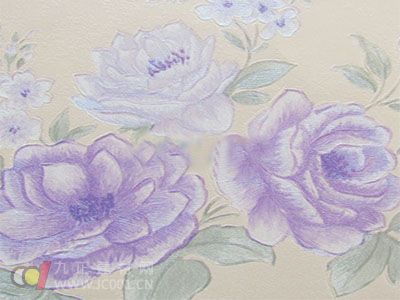The Evolution of Wallpaper 1. Paper-Based Wallpaper Era Paper-based wallpaper was one of the earliest forms of wall coverings, featuring printed designs, embossing, or fabric-like textures. It was simple and affordable, making it a popular choice in earlier decades. Advantages: This type of wallpaper allows for good air circulation, helping to release moisture from the wall surface, which reduces the risk of discoloration or bubbling. It is also cost-effective and easy to install. Disadvantages: However, it lacks durability and water resistance, making it hard to clean and prone to tearing. Due to these limitations, it's now less commonly produced. 2. Foaming Wallpaper Period During the 1980s, foaming wallpaper became very popular. Known as "foam" or "screen embossed foam," this type involved adding a foaming agent to the materials, which expanded during high-temperature processing, creating a textured surface. Though largely phased out today, you might still find remnants of this style on ceilings in older buildings. Advantages: The 3D effect adds depth and visual interest to a room, enhancing its overall atmosphere. Disadvantages: Despite its aesthetic appeal, it’s not very durable. It can easily be scratched or stained, and cleaning is challenging. 3. Rubber-Surface Wallpaper Era In the late 1980s, rubber-surface wallpaper emerged as a more advanced option. It remains one of the most widely used types today. Made with a base paper layer and a PVC film on top, it undergoes processes like lamination, printing, and embossing to create a durable finish. Advantages: This type offers a smooth, non-foamed texture that is waterproof, moisture-resistant, and long-lasting. It supports vibrant printing and detailed embossing, allowing for a wide range of patterns and colors. It is also practical and versatile for various interior designs. Disadvantages: Some PVC-based wallpapers may emit volatile organic compounds (VOCs) over time, leading to potential aging and reduced lifespan. Additionally, they are not breathable and are difficult to recycle. 4. Green Wallpaper Trend In recent years, eco-friendly and green wallpapers have gained popularity due to their non-toxic, odorless, and breathable properties. These options are ideal for those seeking sustainable and healthy home decor solutions. Paper-Based Green Wallpaper: Made from natural paper, acrylic coatings, and water-based adhesives and inks, it is safe for use in children's rooms. It offers strong adhesion, breathability, and resistance to cracking and wear. Non-Woven Fabric Wallpaper (Buki): Constructed from non-woven materials, it uses water-based adhesives and inks, making it a safer and more environmentally friendly option. Quartz Fiber Wall Decor: Composed of quartz fiber fabric, special primers, and coatings, this type provides excellent elasticity and strength. It does not produce dust and is completely safe for human health, making it an excellent choice for modern interiors. Heat Lamp Oval Marble Carving Station,Oval Marble Carving Station,4-Lamp Carving Station,Marble Culinary Station Shaoxing Biaoyi Hardware Products Co., Ltd. , https://www.byeob.com
The development stage of wallpaper